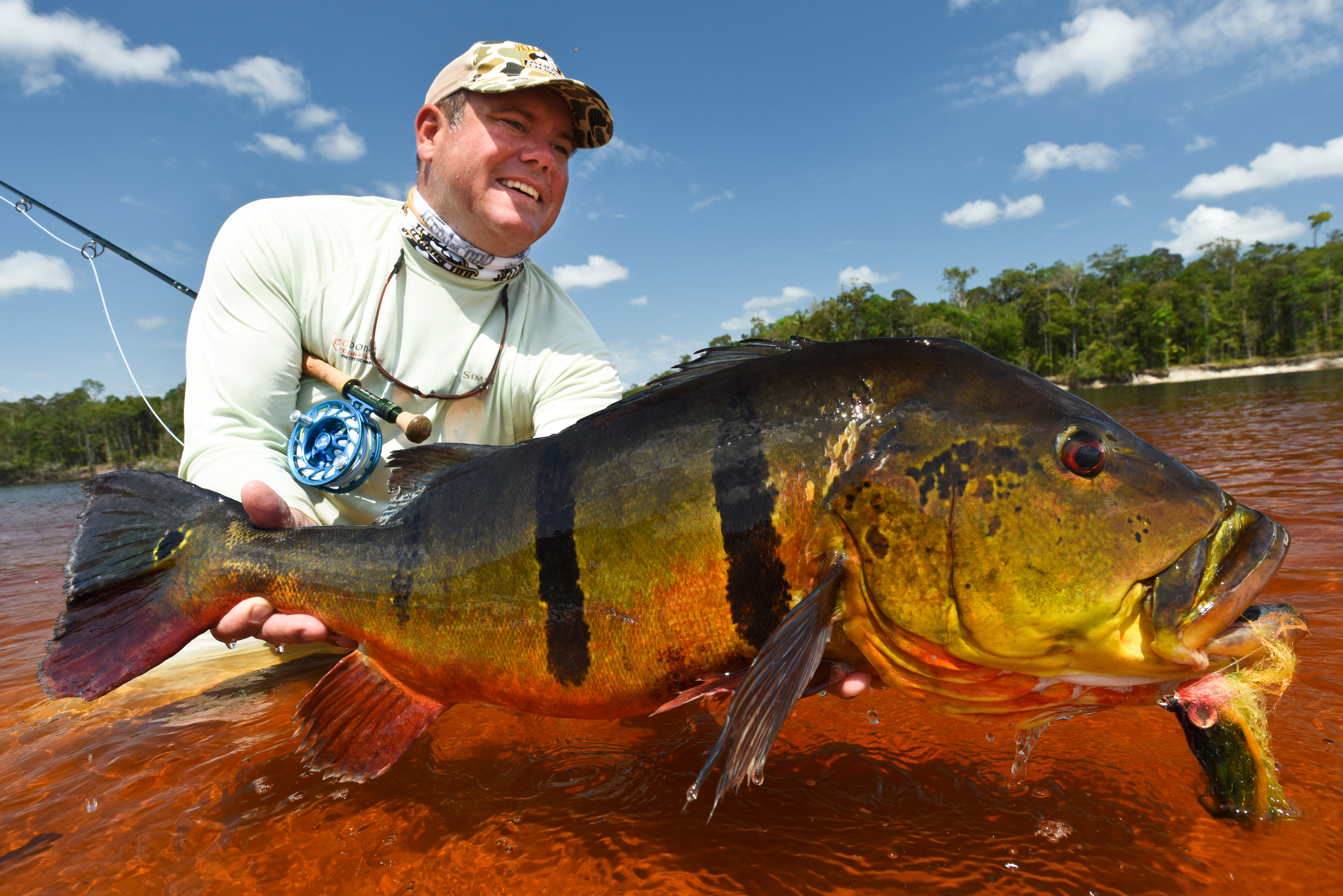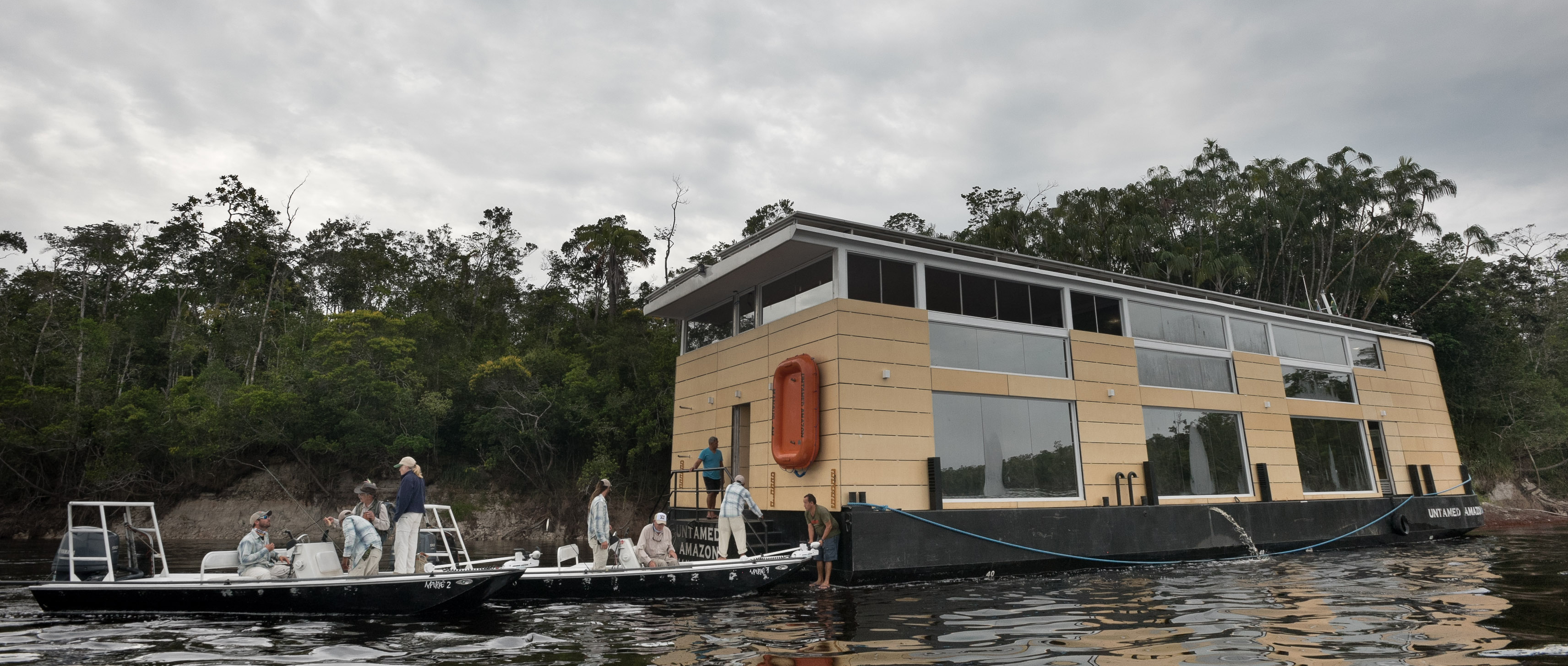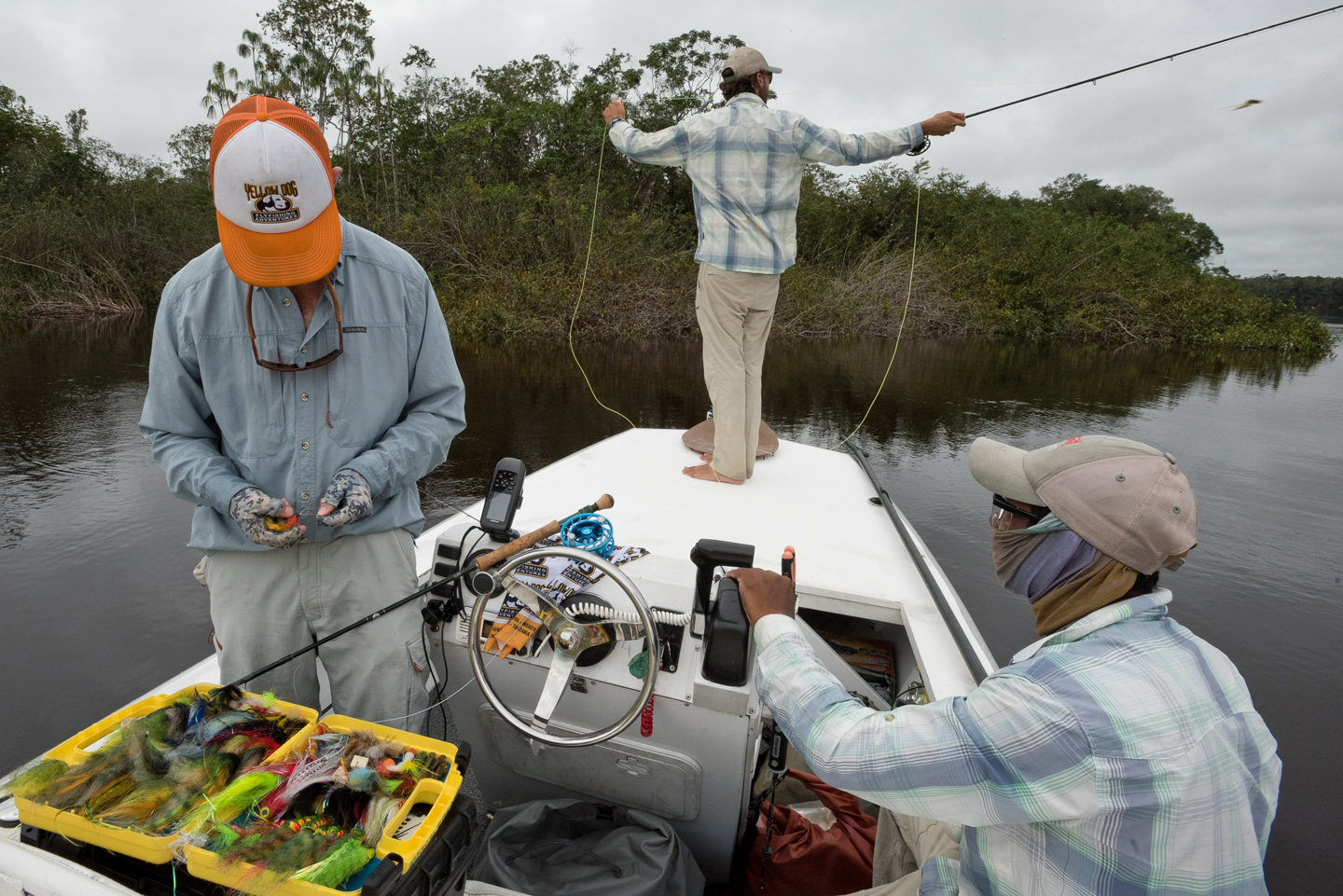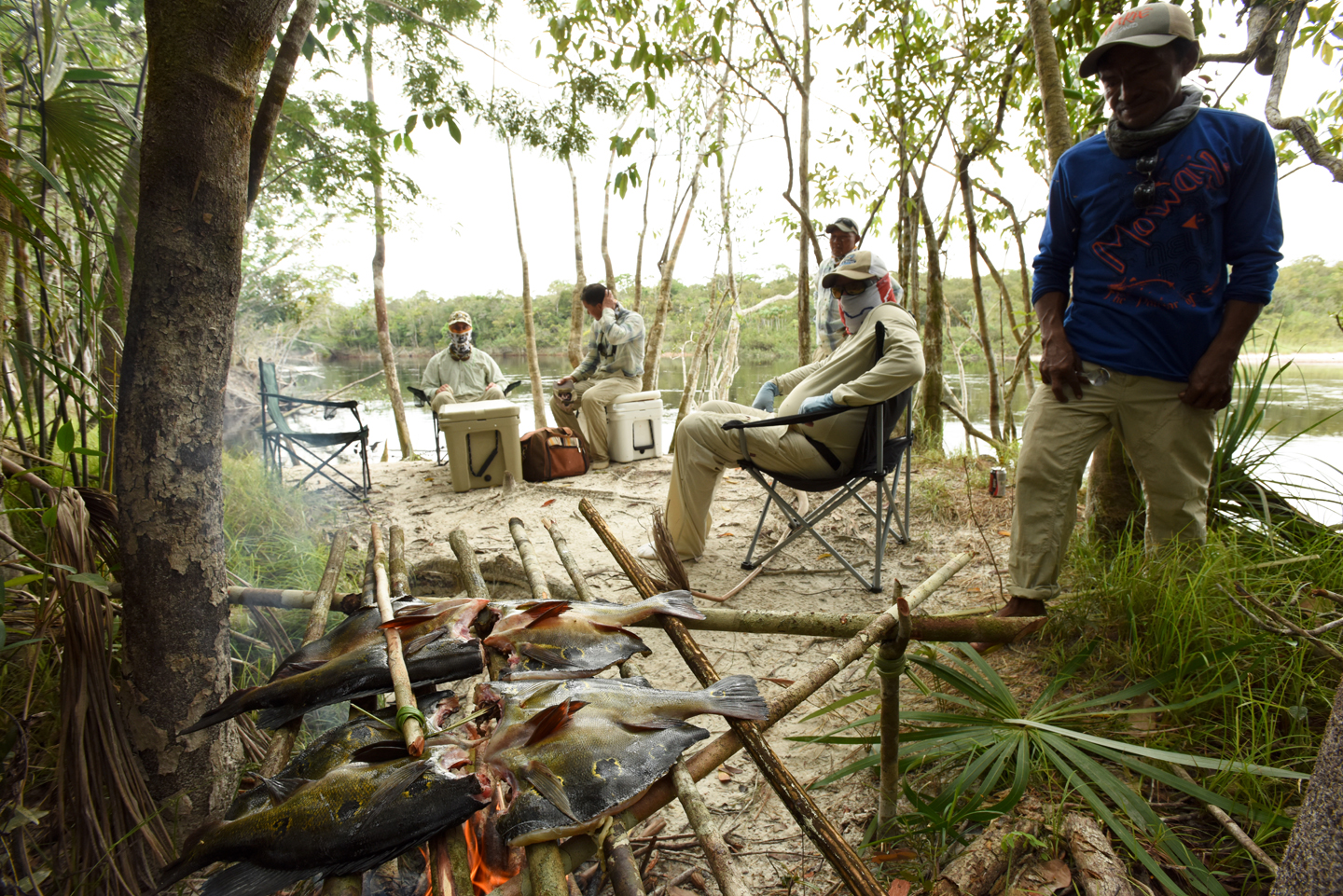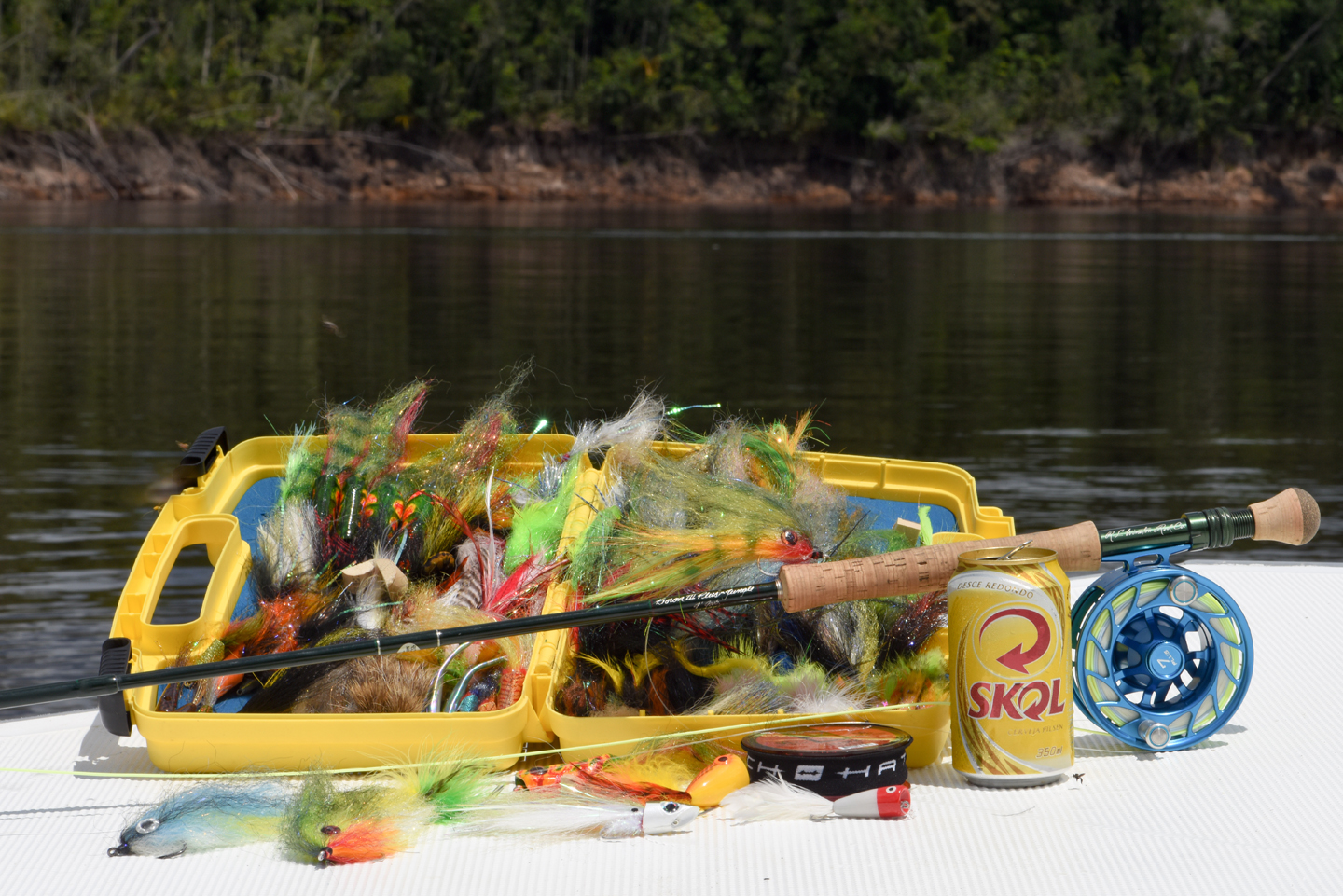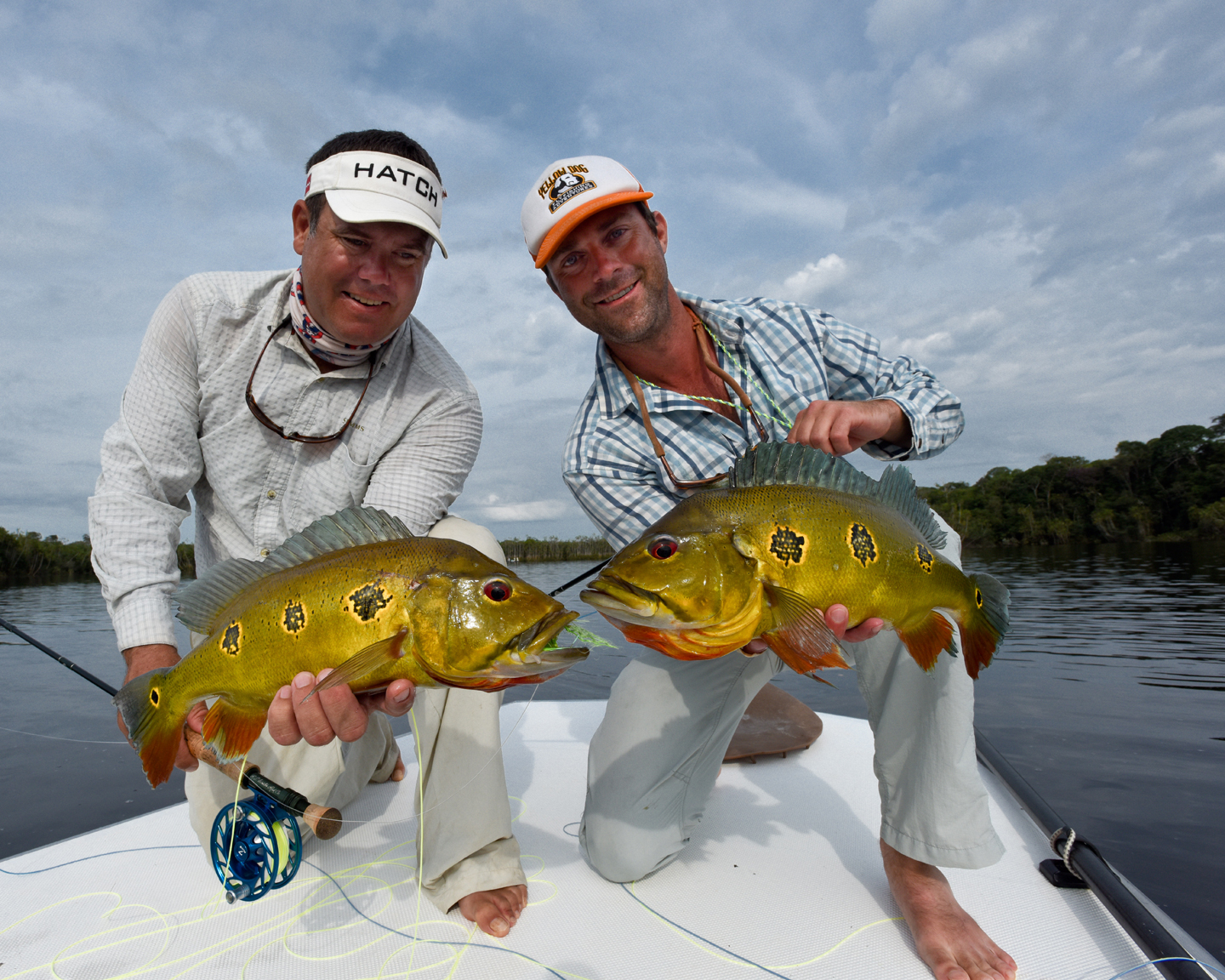Q: After returning from Bolivia only a week or two ago, you set off again for the tropics, this time to the Brazilian jungle. Where in Brazil is this new lodge and how do you get there?
A: The new Rio Marie lodge is located in the northwestern part of Brazil and almost on the Columbian border. The river systems you are fishing are in the upper reaches of the Amazonian basin. Travel starts in Miami with direct flights to Manaus, which is a large city and one of the major ports on the Amazon River. Our package includes your arrival night’s stay at the Hotel Tropical which is the best option in the city. As with many South American accommodations do not be in a rush to check-in or obtain a cold beverage. The following morning the ground transfer agent picks you up for the three hour charter flight aboard a 14-passenger, twin engine turbo-prop to the remote Indian village of Sao Gabriel. From there you have a five hour boat ride to the mothership on a comfortable transfer boat with a Bimini top and rain shields. Bring a good book.
Q: We hear that pound for pound Peacock Bass are among the world’s strongest fish, explosive and powerful. How do you compare them to Dorado or other powerful species?
A: The allure for Peacock Bass is their sheer numbers and willingness to eat a popper. They jump, and they do pull hard. They do not have the savage attitude of a Golden Dorado, but much like the Dorado in Bolivia you cannot let them run, because of the dense cover and snags in the rivers. You basically death grip them and pull them in with 50 pound test. It does take some of the fun out of the fight, because you cannot let them run or flex your rod. It is pretty much a tug-of-war and with 50 pound test the anglers should win each and every time. It is all about the eat and aerial jumps. I will say that the Rio Marie has some of the largest Peacock Bass found anywhere in the Amazon. They are a different species called Pacu Asul that grow to 20+ pounds and are the reason you travel to such lengths to fish this drainage. The smaller Butterfly Peacock Bass are numerous and found in the main river and lagoons, but the larger Pacu are found mainly in the lagoons and backwaters. To target these larger species, sink tip lines and very large flies with rattles are paramount. This demands lots of long casts with clumsy flies, so do some pre-trip weight training to build your casting arm muscles.
Q: What about peacock bass necessitates specialized equipment?
A: I tied lots of large Enrico Puglisi style baitfish flies in greens and orange. The key ingredient seems to be attaching a rattle to the fly. We had high water which was a dark tea color, so having a fly emit sounds seemed important. Limit your materials when tying the fly. You want sparse flies that cast easier and sink faster. Also, tie a few with heavy dumbbell eyes for high water and deep lakes. Add stripes with a Sharpie marker to imitate the bars of a Peacock Bass.
Lines are super important. You want a ridged saltwater line with an aggressive taper, and sink tip to get the fly down. I’m not a huge fan of over lining my fly lines, but this fishery demands a big belly tapered line to minimize false casting and support the big flies. You do not want to be false casting too much or you will wear yourself out. Using a tension cast (let the line rest on the water briefly on the first forward cast) will enable you to reduce false casts and shoot the line with ease. The head guide, Gerson, had a customized fly line built that was perfect and the lodge should be able to supply their anglers with this taper in the future. The line I brought was terrible and turned to spaghetti after I landed a few big fish and yanked on a snag a few times, so bring extra fly lines.
Wear long pants and shirts to protect you from the strong sun and bugs. We were there in the late season when the rains start, so the bees and bugs were prevalent in the lagoons and around the jungle. I guess the bugs are not so bad earlier in the season.
Having finger tape or gloves helps protect from the fly line burning your stripping fingers. With all the stripping of line, and stripping the fish in (you rarely fight them off the reel because the tug-of-war strategy) you must have finger protection. I think tape is the best, because those finger condoms were always getting wet, stretching, and falling off.
Q: What is your typical fishing day? How many fish in average should anglers expect to hook per day?
A: When water levels are dropping you can expect solid numbers of bass each day. You tend to get into schools of fish around their “nests” which makes for consistent action. It would be not uncommon to hook over 30 fish in a day during average conditions. If water levels are rising the fishing becomes tougher. The fish move deeper into the jungle and cover, which makes for tough casting and hook ratio drops. The guides throw teaser rigs that are hookless to draw the fish out of the backwaters. This definitely helps getting tight. We found poppers the most fun at Rio Marie. Chartreuse foam crease flies and Pole Dancers worked best. Pole Dancers are very expensive and the paint wore off the popper head, which really chaffed me.
Q: How did the new Winston Boron III Plus Jungle rods perform and what kind of an edge did they give you over conventional comparable 8-weight or 9-weight fly rods?
A: Be sure to have a powerful and smooth-actioned fly rod, because you are casting so much and putting some serious heat on the fish once hooked. As with Bolivia and Golden Dorado, the Winston Boron III Plus 9-weight Jungle Rod is a perfect tool. It is easy to shoot line, supports big flies, and crushes fish. The oversized guides enable the line to shoot freely using the tension cast technique, which decreases fatigue. I was lucky enough to land a very large fish that was a brute. I could not let it run, because of the ever-present snags and downed trees. Having the Boron III power in the lower sections of the rod enabled me to work the fish to the boat quickly, while maintaining a consistent tautness even as the fish shook its head and jumped. It is all about the down and dirty which is a wonderful technique I learned from Stu Apte many years ago. It is the only way to fight big fish quickly. Leverage the fish with the butt and lower sections of the rod, so the tip is basically straight to the fish, and always pull to the tail to throw off the fish’s equilibrium.
Q: What advice do you have for anyone considering fishing for Peacock Bass?
A: Know the rainy seasons, as they differ in different parts of the Amazon. Do pre-trip arm strengthen exercises for long casting days with big rods and flies.
Q: Tell us a little about your ideal day in the jungle?
A: Watch my buddy get a big one in the morning, shoot lots of photos, and then fish top water for the rest of the day.

